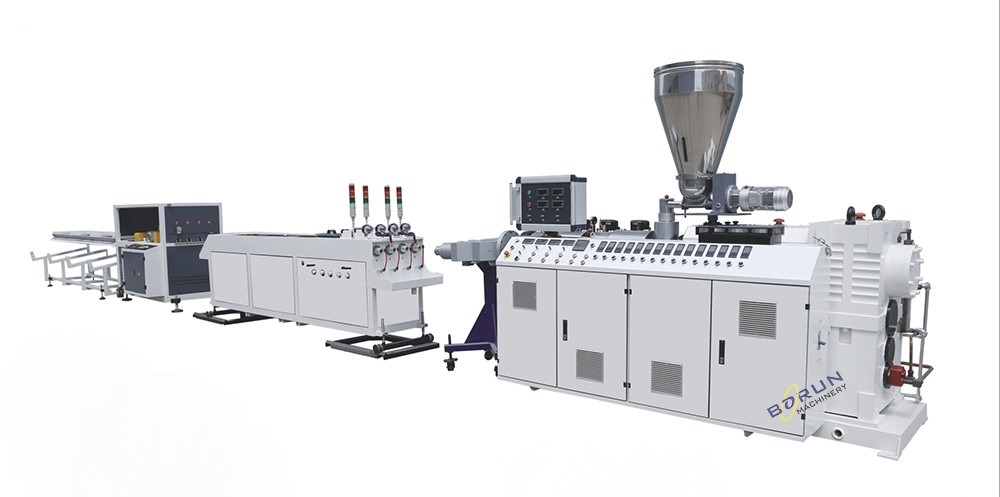- Call: +86-13584426116
- Email: info@borun-machinery.com
- Get a Quote
Extrusion is one of the oldest methods of shaping plastic materials with relatively simple profiles.
It is a compression process in which the selected material is made to flow through the hole in a die to generate a long, continuous product with a specific cross-sectional shape is in turn determined by the shape of the nozzle.
Within polymer shaping, extrusion is widely used with thermoplastics and elastomers, but rarely with thermosets, to mass produce items such as tubes, ducts, foils, films, wire and electrical cable coatings, structural profiles such as window molding, and doors.

For this type of products, extrusion is carried out with a continuous process; the product is extruded and immediately cut to the desired lengths. These process is carried out using the plastic pipe extrusion line.
With the extrusion, the largest volume of polymer production is realized, since it is not only used for the production of bars, tubes, sheets and films in thermoplastic materials, but also for the thorough mixing of all kinds of plastics and for the production granules; An important difference with metal extruders is the use of screw extruders.
There are two extrusion methods used industrially: a) wet extrusion molding and b) hot, continuous or dry extrusion molding.
Wet extrusion is performed by only a small number of firms, limited to nitrocellulose compounds. The nitrocellulose moistened with alcohol is placed in a steel mixer together with the solvent and a plasticizer; color and pigment can be added, mixing the whole until obtaining a homogeneous mass. The material is strained, dried under vacuum to recover part of the solvent, and finally kneaded in differential cylinders.
The plastic material is ground to a jelly-like consistency to be hydraulically extruded, formed into rods and tubes, or also into a harder strip-able shape for the screw-type extrusion machine. In the North American trade, the hydraulic machine is known as the stuffing machine, and the screw type with the “screw machine”.
Dry extrusion molding, continuous or hot, uses thermoplastic molding powders and relatively small extrusion machines, of a model previously used for other materials, mainly rubber. Many of the different stages of this procedure are subject to regulation, this form of extrusion is not standardized.
Characteristics of the extruders.
Piston extruders.- These machines consist of a cylinder that has heating elements, the raw material descends from a hopper into the cylinder where the material is laminated. This is forced to pass through a nozzle, pushing it with a piston which is actuated by hydraulic or mechanical pressure.
Extrusion pumps.-They are pumps with some pairs of gears that are coupled and housed in a casing; when a gear is driven it moves the correlative.
Rotary drum extruders- In this machine the material descends by gravity and enters through the piston into the chamber, which is made up of the rotating drum and the fixed frame or static body.
Roller extruders- Consists of two horizontal rollers whose axes are parallel to each other, these cylinders are heated by an external source and rotate in the opposite direction.
Screw extruder- These machines consist of a motor and a speed variator to adapt the ejector rotation. The ejector comprises a screw that rotates within an externally heated jacket.
The plastic in the form of granules, powder or strips, is constantly fed from a hopper located on the body, the material passes through a funnel to the cylinder and as it progresses it is heated, mixed and compressed; and, when it has achieved a moldable consistency, it passes through the nozzles or forming hole.